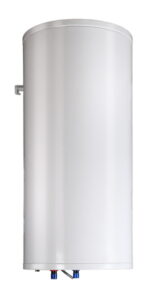A water heater is a powerful appliance that you and your family rely on almost every day in your home. Any device that does that much work requires occasional maintenance to keep it in good working order. We recommend you schedule water heater service in Rockville, MD once a year for your water heater.
One of the maintenance jobs for a water heater is a tank flush. This isn’t necessarily done every year during maintenance, but your water heater does require it at least every few years. You can find instructions online for doing a tank flush on your own, but we don’t recommend this—the process is too complicated and requires numerous special parts. Our technicians can get the job done fast and accurately.
What’s the Purpose of Flushing a Water Heater?
The simple answer: to remove the buildup of sediment from inside the tank.
The cold water that enters your home and goes into the water heater to be heated up contains some level of minerals. As the water is heated, some of these minerals will settle along the bottom of the tank as sediment. During a tank flush, all the water in the tank is drained out which removes this sediment, and the tank is then refilled.
Why Does This Sediment Need to Be Occasionally Removed?
There are several reasons you don’t want to let sediment keep building up in your water heater
It lowers the water heater’s energy efficiency: When a layer of sediment settles along the bottom of the tank, it creates an insulating layer between the water in the tank and the heat exchanger below it that sends heat into the tank.
This insulation will make it harder for the water heater to heat the water to its normal temperature, and the water heater will expend more energy to do its job. Flushing the tank will help you lower your water heating costs.
It reduces the equipment life of the water heater: Simply making the water heater work harder will put more wear on it, accelerating its aging. Sediment can also do damage to parts of the water heater and lead to it breaking down earlier. One specific effect sediment has is creating hot spots that may end up warping the tank or causing it to crack and leak.
The Hard Water Issue
If your home has hard water, then the problem of sediment in the water heater will worsen. Hard water has a high mineral content, and this will cause rapid sediment collection in the tank.
We strongly recommend you have a water softener installed in your house to reduce the detrimental effects on the water heater and to diligently schedule water heater service so the tank can receive regular flushes.
How to Know You Need a Tank Flush
Along with scheduling annual maintenance, you may need to call our team for an early water heater flush if you notice signs such as a popping sound from the tank (water bubbling up through the sediment layer) or a drop in your home’s hot water temperature (the sediment blocking effective heating). You may even notice sediment getting into the hot water that comes from the tap—that’s a big warning sign!
Rely on B&B Air Conditioning & Heating Service: We are always there when you need us.



